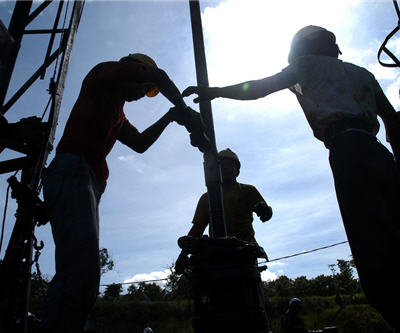From energy footnote to oil giant: Infographing the Canadian oil boom

Infographics design firm Visual Capitalist has constructed a very interesting infographic on the Canadian oil boom. Thanks mostly to the northern Alberta oilsands, the amount of crude oil underneath Canadian soil or waters has gushed from a mere 7 billion barrels a decade ago to an astonishing 175 billion barrels. The only countries with more crude oil than Canada are Venezuela and Saudi Arabia.
Oil companies have known about the bitumen-rich oilsands for decades, but the tarry substance has only recently become economical to extract. As the infographic points out, the price of oil bumped along under $40 a barrel from 1983 to 2003, and then began rising, reaching a high of over $120 a barrel just before the economic crash of 2008. The cost of a barrel of oilsands crude is roughly divided in three by extraction costs, upgrading the bitumen to produce synthetic crude, and capital costs, taxes, royalties, etc. Oilsands extraction is not cheap, but it’s not the most expensive method either. Ultra deep water oil, polar oil, and shale oil are all more expensive and slower to develop.
But don’t the oilsands emit a lot of greenhouse gases and use copious amounts of water? Yes and no. While it’s true that oil sands average 5-20% higher emissions than a barrel of conventional oil, this must be compared against other sources of GHGs. Vehicles produce 70-80% of emissions and in 2009, American coal-fired power plants produced 30 times more emissions than the oilsands. Oilsands account for 7% of Alberta’s water usage but 80-95% of the water is recycled, mostly back into the Athabasca River. Oil sands mining is more water-intensive than insitu mining, with surface mines using 2-4 barrels of water per barrel of oil, versus half a barrel for insitu (underground) operations.
More News
{{ commodity.name }}
{{ post.title }}
{{ post.date }}


Comments
Bob349
Coooooooool!